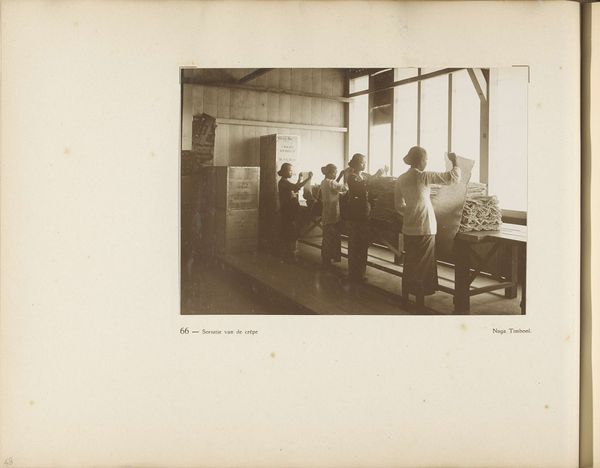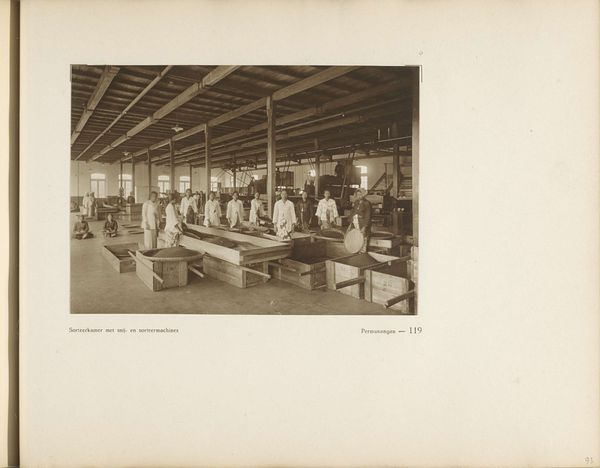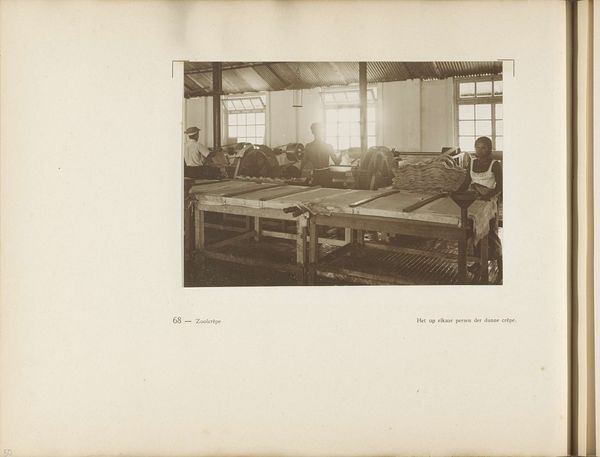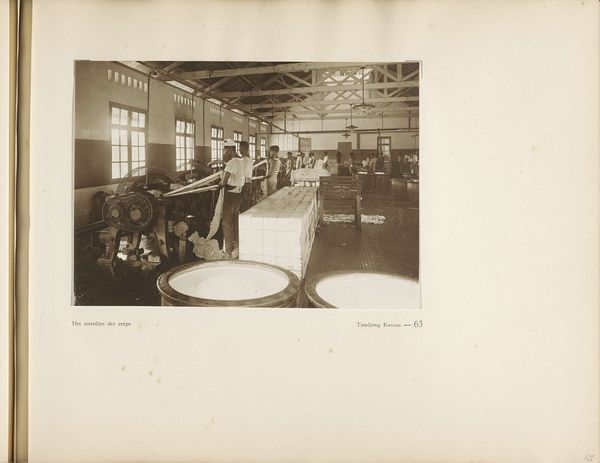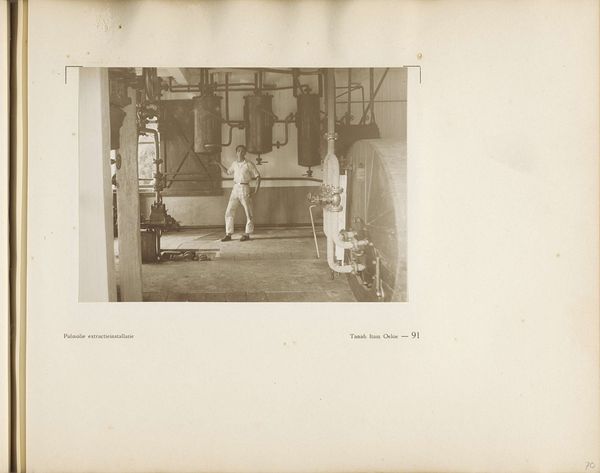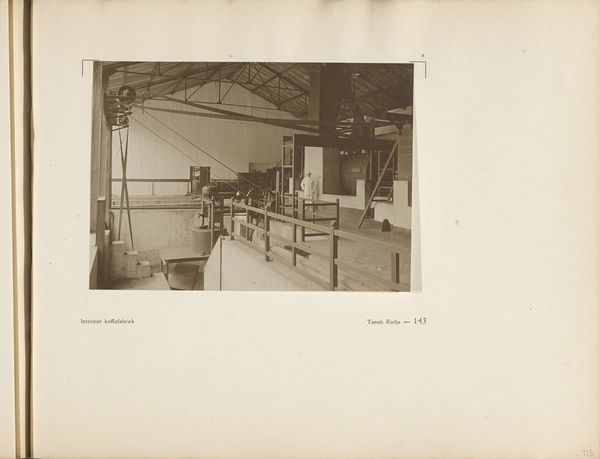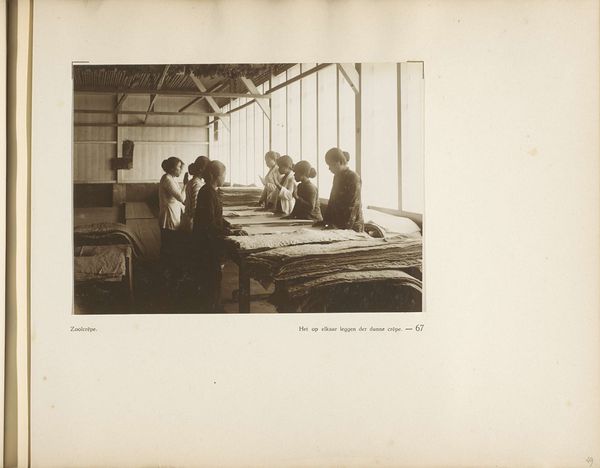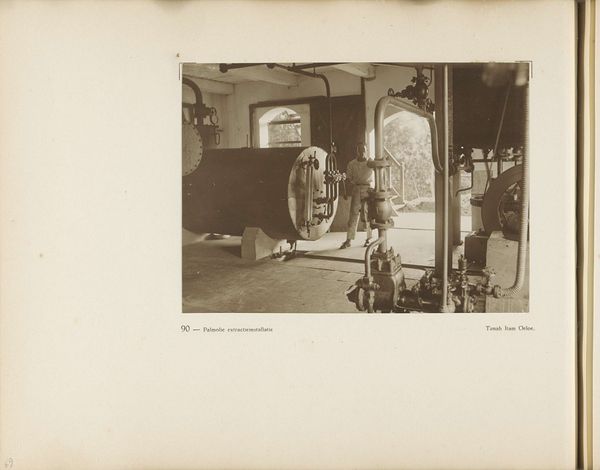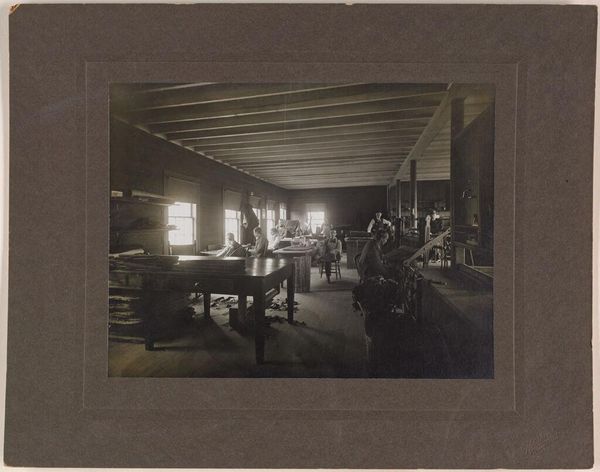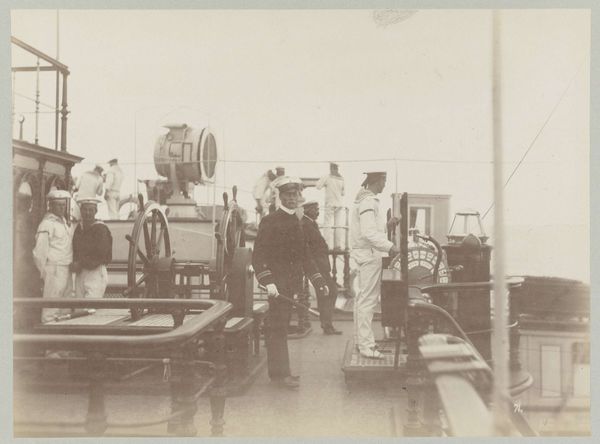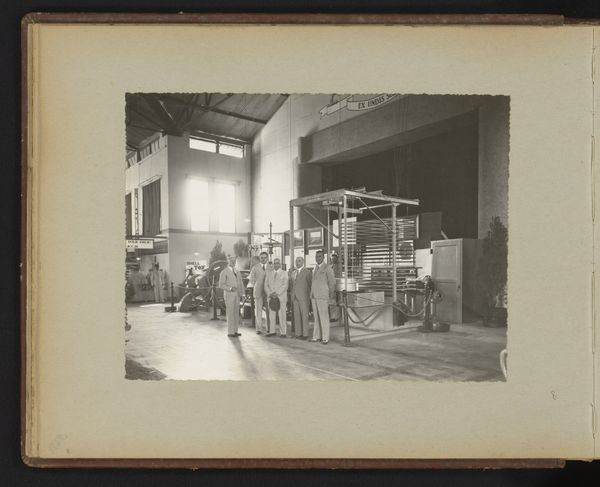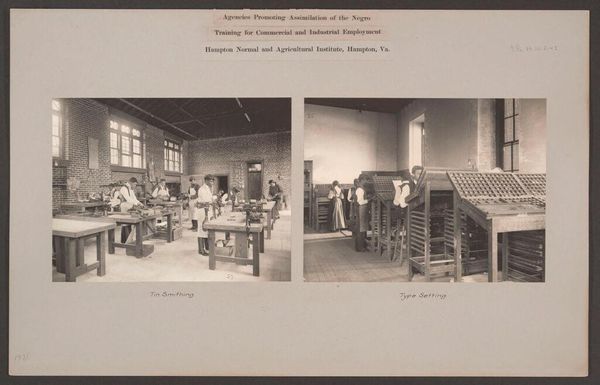
Pagina 60 van fotoboek van de Algemeene Vereeniging van Rubberplanters ter Oostkust van Sumatra (A.V.R.O.S.) c. 1924 - 1925
0:00
0:00
jwmeyster
Rijksmuseum
photography, gelatin-silver-print
#
portrait
#
photography
#
gelatin-silver-print
#
genre-painting
Dimensions: height 240 mm, width 310 mm
Copyright: Rijks Museum: Open Domain
Editor: This photograph, "Pagina 60 van fotoboek van de Algemeene Vereeniging van Rubberplanters ter Oostkust van Sumatra (A.V.R.O.S.)", or page 60 of the photo book of the general association of rubber planters on the east coast of Sumatra by J.W. Meyster, was created sometime around 1924 or 1925 using gelatin silver print. It gives us this somewhat grainy view of a work scene in, I presume, a rubber plantation. The lighting and composition feels…staged somehow, not quite documentary. What catches your eye when you look at this image? Curator: It is interesting you describe it as staged. To me, the image immediately reads as a visual articulation of colonial power dynamics. Here we have an image, carefully constructed, intended to present a certain view of industry and labour in Sumatra. The association documented would surely be interested in conveying its image, shaping its narrative to its advantage. Editor: So, you're saying this photo is less about representing reality and more about promoting a particular narrative? Curator: Precisely. Consider the 'genre painting' tag—this is not simply documentation, but an intentional visual framing, elevating labour in a way that perhaps romanticizes or normalizes colonial exploitation. The light, as you observed, carefully illuminates the workers and their tasks, almost creating a picturesque scene. It avoids showing any negative aspects of the hard work. Editor: I hadn't thought about it that way, but looking closer, it seems almost like propaganda now. I was so caught up in the composition, but missed the bigger picture of who created this image, and why. Curator: Exactly. Photography at this time in such colonial contexts served multiple purposes: documenting industry, showcasing "progress," and solidifying power structures. Who had control of the photographic narrative, who was behind the camera, and how that photograph would circulate would surely be influenced by colonial agendas. What have you gathered now? Editor: Now, it is evident that analyzing such imagery calls for one to explore the underlying cultural and historical dynamics between those being depicted, those producing it, and who were meant to consume such image. Thank you, your expertise certainly added to my interpretation.
Comments
No comments
Be the first to comment and join the conversation on the ultimate creative platform.
